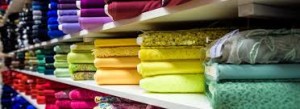
Where would the world of fashion be if there were no textile dyes! Glitz and color is added to the fashion ramps due to the infusion of vibrantly dyed fabrics used to clothe the models. Models attired in flashy leather jackets and boots or soothing hues showcase the creativity of various designers; their appeal and attraction however, lies in the base fabric color. It is all because of the magical effect of dyes!
Textile dyes have become an indispensable part of the fashion industry and for that matter, every aspect of our lives. The major class of dyes used primarily for the tinting of textiles is the reactive dyes. These dyes are available in several color hues and differing formulation finishes. They go down well with fabrics or fibers such as linen, cotton, hemp, rayon, bamboo, jute etc. and are also compatible with silk. However, they are totally non-compatible on polyester fabric and not much suited for wool either. During the dyeing process, a covalent bond is formed between the molecules of the fiber as well as the dye due to which the dye gets attached to the fabric and in fact, becomes a part of it. Initial bleeding of color may occur till all the loose dye is removed but thereafter the colored fabric can be safely washed with a tubful of white laundry without the white clothes getting stained. Soft cottons, sheer silks and rough jutes are the fabrics normally favored by most of the fashion designers who get them personally dyed depending upon their needs.
Leather dyes are another form of dyes that have found an important place for themselves on the fashion scene. Who can miss the shiny black leather jackets, black high boots, designer leather handbags and vibrant shoes donned by several models as they ramp down the catwalk? Today, leather has no longer remained cool weather fashion apparel. The fashion world has been introduced to the hot leather bikinis meant as summer wears on the beach. Fitting snugly and being soft as a glove, one can only laud the latest ‘buzz things’ on the fashion scene.
Today, the textile industry is making a noteworthy contribution to the economies of several developing countries and textile dyes forms a small but vital part of this industry. The fashion apparel industry is one of the largest consumers of these dyes and also the most aware of the whole lot about the environmental impacts of the textile dyeing process. Yes, the textile dyeing process does affect the eco system but due to the increased awareness, processes are being switched to ensure that dyeing of fabrics causes minimum harm to the environment.
Textile dyes and fashion apparel is truly inseparable!